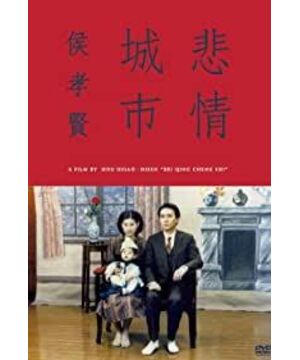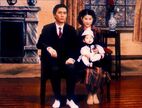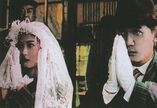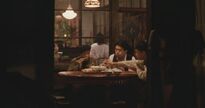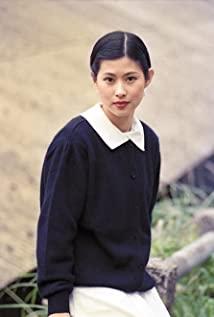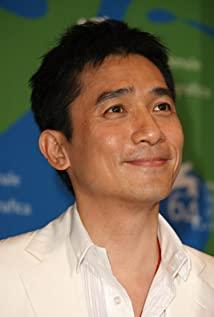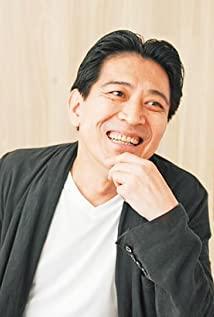Looking at it later, I finally understood that these were all intentional and extremely profound. The greatness of "City of Sadness", Hou Hsiao-hsien and Wu Nianzhen lies in using this film to speak loudly for the whole of Taiwan.
To understand "Sad City", you must understand the history before and after that period. 228 has been a taboo in Taiwan for a long time, a topic that cannot be covered in cultural and political circles. Although the atmosphere has eased in the late 1980s, it is still a very dangerous topic. This has led to Hou Hsiao-hsien being forced to go to the side of the sword. First, he went directly to Venice and won the first golden lion in Taiwan's film history. Taiwan, to ensure the normal release of the film.
228 itself took place in 1947, basically a chengguan abused violence that led to large-scale bloodshed between Taiwanese natives and outsiders and the then-government. But this accumulation of contradictions is the reason why 228 is an extremely important event in Taiwan's history. Taiwan experienced Song Dynasty, Dutch colonization, Ming Dynasty and Qing Dynasty repeatedly changing hands. During the whole process, Taiwanese people in the province have always been in a dominated position, and they have never really mastered their own destiny. After that, it was divided into Japan and ruled for half a century. Half a century of Japanese colonization, Taiwan's infrastructure construction has been greatly improved, the economy has gradually developed, and a new order has gradually begun to be established. However, only the ruling layer is still completely controlled by the Japanese. Although some people from Taiwan are accepted, but Power is still absolutely in the hands of the Japanese. In 1945, when Japan evacuated, Taiwanese people thought that they had finally ushered in their prominence, but they were taken over by the Kuomintang government that came from the mainland across the sea. The economic pressure brought by the civil war on the government, as well as the foreign government’s self-enrichment, led to the people’s hardship and intensified efforts. In 1947, the urban management incident triggered a large-scale rebellion against the people from other provinces, and on the basis of this, the resistance of the people from the province was controlled by the people from other provinces. 228 Incident of the government. After 228, the voices of Taiwanese intellectuals were basically silenced.
Going back to the film itself, I think I have to mention the alternation and use of multiple language types in it, which I think is carefully designed and blended with the historical background. In the first half, Taiwanese and Japanese appear alternately, and various symbols of Japan emerge in an endless stream. What followed was the departure of Shizuko (a metaphor for the evacuation of Japan, and the disconnection between Taiwan and Japan), and after a long conversation in Japanese, Japanese began to fade out of the entire film. In some background shots, we can listen to To the Mandarin began to be taught in the hospital. Then came the introduction of various mainland dialects. The most typical example is that Lin Wenxiong went to negotiate with the Shanghai Gang in order to save Ah Liang, from Taiwanese to Cantonese, and from Cantonese to Shanghainese. Chen Yi's Zhejiang dialect broadcast also has a very strong sense of incompatibility. In an era when people from other provinces entered in large numbers and recklessly annexed Taiwan's scarce resources through the government, Taiwanese people in Taiwan were forced to continue to suppress and forbear. Language has become an important spiritual element for people in this province. In the last scene, language became the only sign of identifying the enemy and ourselves. As a mute, Tony Leung struggled to shout out his only line in the whole film: "Taiwanese". Strong expressive ability. After 228, the dialect began to weaken. Finally, when Wu Kuanrong was arrested, he began to switch to a more formal Mandarin. The military police shouted arrest and kill in Mandarin. On the other side, there was only a silent and weak protest.
The four members of the Lin family and the Wu family also represent different ways of struggle or compromise among Taiwanese people at multiple levels. Lin Wenxiong represents a traditional generation of Taiwanese from Taiwan. The struggle at the primitive level has no doctrine or lofty ideals, but harbors pent-up anger based on primitive instincts. The Japanese, the Chinese, everyone eats, everyone rides, and no one hurts.” They fought with their primitive bodies, but they had to bow their heads under the helplessness of power. Wu Kuanrong represents the image of a new generation of Taiwanese intellectuals, who do not compromise with the government, have a certain education, have firm ideals and beliefs, and roar: "They say that we are a group of people enslaved by Japan, but the Treaty of Shimonoseki in the Qing Dynasty Throwing us to Japan, who has asked us Taiwanese whether they are willing or not?!", to fight from the spiritual level, using education and words to spread their resistance. Wu Kuanmei represents the humble but hopeful and supportive attitude of the new generation of ordinary people in Taiwan. As for Lin Wenliang and the gang of Lin family members who continued to play mahjong after Lin Wenqing's arrest, in the penultimate shot, they vaguely represented the numb majority of the people. The film ended in such a scene as them, which has to be said to be a kind of sadness. The only person who gave a ray of warmth was Ah Qian who smiled happily in the last group photo. I don’t know if it was my wishful thinking. I think Ah Qian was the last hope that Hou Hsiao-hsien left to the audience.
As for Lin Wenqing's dumb role, there really isn't much to say. He only said one line in the whole film, that is, to show that he is "Taiwanese". Anyone who has watched the film carefully can see that he is a metaphor for Taiwan, a metaphor for the status quo that Taiwanese people have been suppressed and unable to express their own voices, but they have been constantly fighting.
Regarding Hou Hsiao-hsien's shots, except for long shots, it seems that he prefers symmetry and puts the focus in the very center. Many of the shots are very straight and symmetrical. In addition, there are several shots with multiple levels. In addition, there are small details that happen. But I don't really understand it, so I don't dare to comment. What I don’t understand is that I don’t know why. There are many times throughout the film that the horizontal shots are blocked by doors and aisles, and the shots are divided into portrait ratio shots, such as the dining table of Lin’s family, the corridor of the hospital, and the aisle of the prison. . It gives people a feeling that the camera is free from the scene, standing calmly outside the door to observe. I don't know if it was intentional or something else.
Finally, all in all, I'm not a Taiwanese, so I can't fully appreciate the deep-seated emotions in "City of Sadness". But I can feel the cry of the people in Taiwan Province for their desire to be recognized and to be in control of their own destiny. Anyone who has a good understanding of Taiwan's history should be able to understand and understand the complicated feelings they have towards the mainland and all foreign ruling powers after going through so many ups and downs.
View more about A City of Sadness reviews


